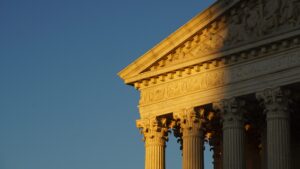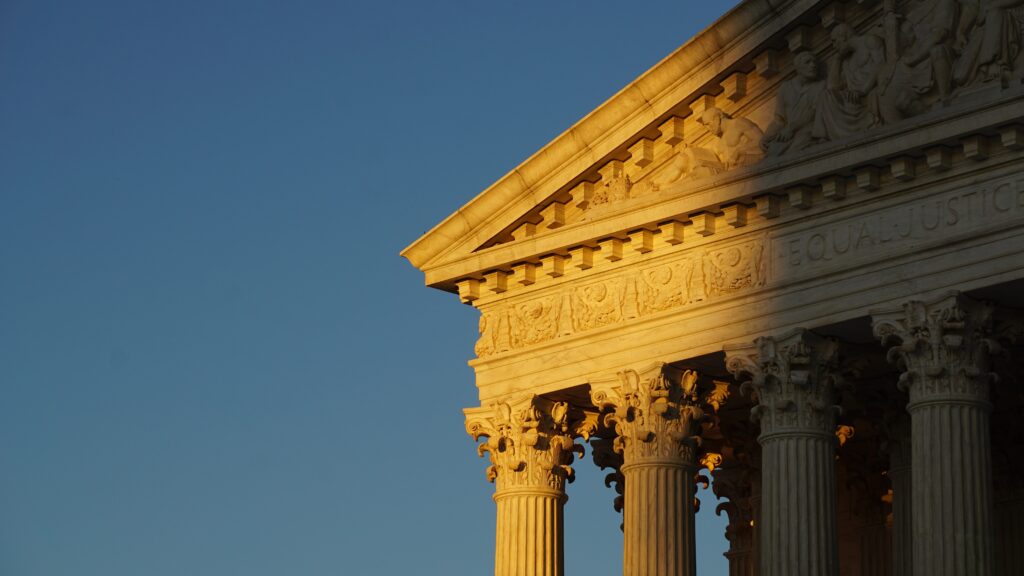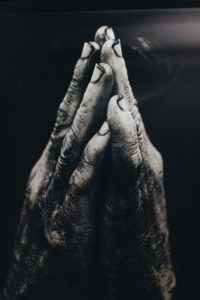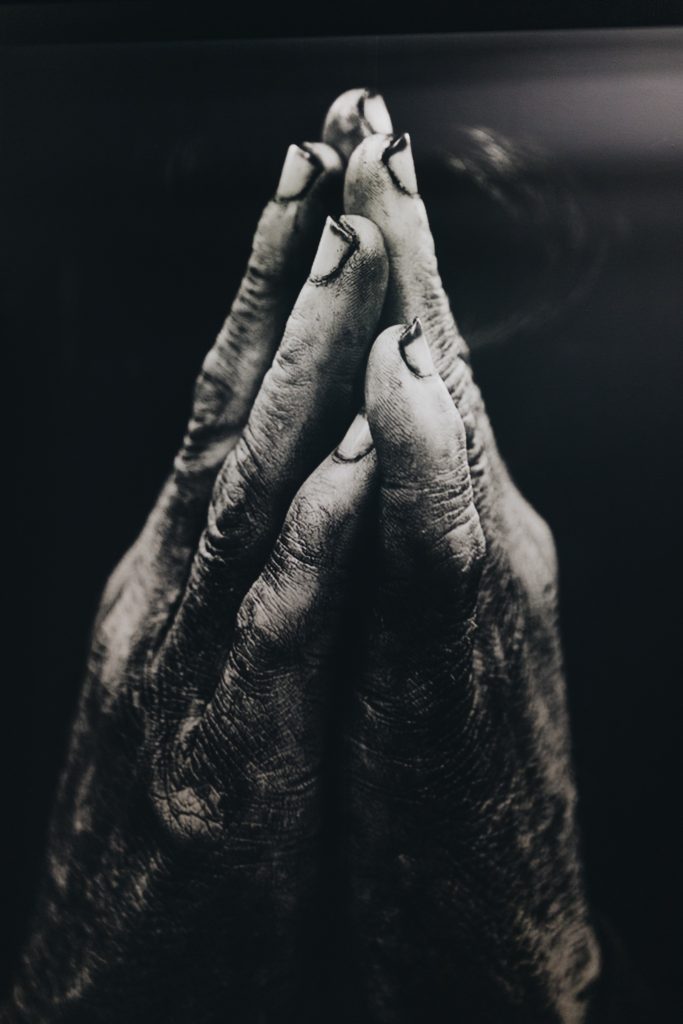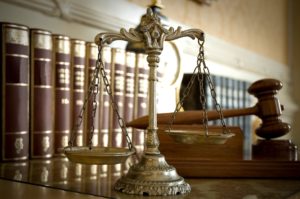By Grace Koppenheffer
When systems work as expected, people generally are content to let such systems work in the background—the shadows—without needing to know the details. When those same systems start producing different and unexpected results, however, people want to shine a light into the shadows to understand, diagnose, and if needed, fix the system.
The concept of the shadow docket has been around since the Supreme Court’s inception,[1] but the term itself was first coined in 2015 by William Baude to refer to the Court’s “range of orders and summary decisions that defy its normal procedural regularity.”[2] Unlike the more well-known process of the “merits docket,” where the Court writes an opinion after multiple rounds of briefing and oral arguments, rulings from the shadow docket almost always come as orders from either a single Justice or the Court.[3] These orders usually come after only one round, or less, of briefing, do not contain a majority opinion nor reasoning, and most of the time provide no record of voting.[4] Because these orders can be handed down at any time—even in the middle of the night—and lack transparency, “these rulings come both literally and figuratively in the shadows.”[5]
Although the Court issues thousands of orders via the shadow docket each year, until recently, many did not pay much attention to the shadow docket because it was meant to resolve “unremarkable scenarios.”[6] For example, the Court has utilized the shadow docket to issue uncontentious decisions such as denying uncontroversial petitions for certiorari, denying petitions that clearly did not meet the criteria for emergency relief, granting additional time for parties to file briefs, and other procedures related to the Court.[7] Recently, however, the shadow docket has faced increased scrutiny focusing on a relatively small subset of cases that employ the shadow docket to seek emergency relief.
Although the Supreme Court has the power to grant emergency relief through issuing injunctions, and issuing and lifting stays,[8] the Court recognizes that these are “drastic and extraordinary remedies,”[9] which should be granted only when “adequate relief cannot be obtained in any other form or from any other court.”[10] In order to circumvent the typical appeals process and petition the Court for emergency relief, petitioners must show that “irreparable harm [will] result from the denial of a stay.”[11]
Congress has begun investigating the Court’s emergency relief orders because of the increased number and variety of cases for such relief.[12] Between 2001 and 2017, the Department of Justice only filed eight applications for emergency relief.[13] During the four years of the Trump administration, however, the Department of Justice filed forty-one such petitions, twenty-four of which were granted in full, and four in part.[14]
Additionally, the types of cases on which the Court has rendered decisions through the shadow docket has not only broadened, but also has become more divisive.[15] Although there were some controversial rulings via the shadow docket in the past, most of these decisions concerned elections and the death penalty.[16] In the last few years, shadow docket decisions have expanded to include cases regarding the border wall,[17] gathering restrictions due to COVID-19,[18] federal executions,[19] abortion bans,[20] eviction moratoriums,[21] and immigration policy regarding asylum seekers.[22] The Justices, like the public, have also been divided on these controversial issues. Of the eight emergency relief applications filed by the Justice Department between 2001 and 2017, only one had a dissent.[23] Conversely, in twenty-seven of the thirty-six[24] orders regarding the emergency relief applications filed during the Trump administration, at least one Justice publicly dissented.[25] Moreover, during the October 2019 Term, the number of 5-4 decisions from the shadow docket was almost equal to the number of 5-4 decisions on the merits docket.[26]
A major criticism of the recent orders the Court has issued via the shadow docket is that they are inconsistent with one another and with past precedent, leading some to view the decisions as advancing policy rather than the law.[27] In some cases, the Court has changed substantive law through emergency relief orders, articulating new constitutional rules to support such relief.[28] For example, in Tandon v. Newsom,[29] the Court issued an emergency injunction against a California law that prohibited in-home gatherings, including Bible studies and prayer meetings.[30] In its order, the Court adopted an expansive view of the First Amendment’s Free Exercise Clause which “no prior majority opinion had ever adopted. . . .”[31]
Conversely, in other cases, the Court has refused to grant emergency relief for constitutional rights. For instance, in Whole Woman’s Health v. Jackson,[32] the Court denied injunctive relief regarding a Texas law banning abortions after a heartbeat is detected, which is usually around six weeks.[33] Although the Court explicitly stated the “order [was] not based on any conclusion about the constitutionality of Texas’s law,”[34] such a denial of injunction for “an obviously unconstitutional abortion regulation,”[35] defies precedent in such situations and led some to conclude that “the [C]ourt is advancing a partisan political agenda and not a legal one.”[36] When the Court uses the shadow docket to create a new interpretation of the First Amendment in one case but then refuses to utilize it to extend protection to an existing fundamental right in another, critics worry that such inconsistencies undermine the legitimacy of the Court.[37]
There are myriad problems with the recent shadow docket emergency relief cases. For one, the timing of these decisions, which can be handed down late at night,[38] and the usual absence of knowing which way Justices voted create opacity in the system.[39] Moreover, shadow docket orders often do not provide any reasoning for the decisions they hand down, making “it impossible to scrutinize the merits of the Court’s action in far too many of these cases.”[40] Due to this lack of reasoning, it is challenging for lower courts to know how to apply these decisions in subsequent cases, even though such orders are now meant to be treated as precedent.[41] Additionally, other interested parties do not provide input and the Court does not have the benefit of hearing oral arguments.[42] All of these issues ultimately culminate in reducing the Court’s legitimacy.[43]
In her dissent in Whole Woman’s Health, Justice Kagan denounced the majority’s decision stating, “[it] is emblematic of too much of this Court’s shadow-docket decisionmaking—which every day becomes more unreasoned, inconsistent, and impossible to defend.”[44] The Court’s new approach to emergency relief petitions via the shadow docket has garnered greater scrutiny of this system, shining a light into the shadowy process. Whether this new light allows the shadow docket decision making to continue, or whether Congress or the Court itself will attempt to recalibrate the system, remains to be seen.
[1] The Supreme Court’s Shadow Docket: Hearing Before the Subcomm. on Cts., Intell. Prop., & the Int. of the H. Comm. on the Judiciary, 117th Cong. 1 (2021) (statement of Stephen I. Vladeck, Charles Alan Wright Chair Fed. Cts., U. Tex. Sch. L.), https://www.justsecurity.org/wp-content/uploads/2021/02/Vladeck-Shadow-Docket-Testimony-02-18-2021.pdf.
[2] William Baude, Foreword: The Supreme Court’s Shadow Docket, 9 N.Y.U. J.L. & Liberty 1, 1 (2015).
[3] The Supreme Court’s Shadow Docket, supra note 1, at 1–2.
[4] Id. at 2.
[5] Id.
[6] Samantha O’Connell, Supreme Court “Shadow Docket” Under Review by U.S. House of Representatives, Am. Bar Ass’n: Project Blog (Apr. 14, 2021), https://www.americanbar.org/groups/committees/death_penalty_representation/publications/project_blog/scotus-shadow-docket-under-review-by-house-reps/.
[7] The Supreme Court’s Shadow Docket, supra note 1, at 2.
[8] See 28 U.S.C. § 1651; 28 U.S.C. § 2101(f).
[9] Ex parte Fahey, 332 U.S. 258, 259 (1947).
[10] Sup. Ct. R. 20(1) (2019).
[11] Conkright v. Frommert, 556 U.S. 1401, 1402 (2009) (quoting Rostker v. Goldberg, 448 U.S. 1306, 1308 (Brennan, J., in chambers)).
[12] Mark Joseph Stern, Congress Finally Scrutinizes One of SCOTUS’s Most Disturbing Practices, Slate (Feb. 18, 2021, 6:53 PM), https://slate.com/news-and-politics/2021/02/supreme-court-shadow-docket-house-hearing.html.
[13] The Supreme Court’s Shadow Docket, supra note 1, at 4.
[14] Id. at 4–5.
[15] Id. at 5–6.
[16] Id. at 2–3.
[17] Trump v. Sierra Club, 140 S. Ct. 2620, 2620 (2020) (mem.).
[18] South Bay United Pentecostal Church v. Newsom, 141 S. Ct. 716, 716 (2021) (mem.).
[19] Montgomery v. Rosen, 141 S. Ct. 1144, 1144 (2021) (mem.).
[20] Whole Woman’s Health v. Jackson, No. 21A24, slip op. at 1 (2021) (mem).
[21] Ala. Ass’n Realtors v. Dep’t Health & Hum. Servs., No. 21A23, slip op. at 1 (2021) (per curiam) (mem.).
[22] Biden v. Texas, No. 21A21, slip op. at 1 (2021) (mem.).
[23] The Supreme Court’s Shadow Docket, supra note 1, at 5.
[24] Four of the total forty-one applications were withdrawn and one was held in abeyance. Id., at 4–5.
[25] Id. at 5.
[26] Id.
[27] Steve Vladeck, The Supreme Court Doesn’t Just Abuse its Shadow Docket. It Does So Inconsistently., Wash. Post (Sept. 23, 2021, 10:43 AM), https://www.washingtonpost.com/outlook/2021/09/03/shadow-docket-elena-kagan-abortion/
[28] Stephen I. Vladeck, Opinion, The Supreme Court Is Making New Law in the Shadows, N.Y. Times (Apr. 15, 2021), https://www.nytimes.com/2021/04/15/opinion/supreme-court-religion-orders.html
[29] 141 S. Ct. 1294 (2021) (per curiam) (mem.).
[30] Stephen I. Vladeck, The Supreme Court Is Making New Law in the Shadows, supra note 28.
[31] Id.
[32] No. 21A24 (S. Ct. Sept. 1, 2021) (mem.).
[33] Id. at 1–2.
[34] Id. at 2.
[35] Id. at 1 (Kagan, J., dissenting).
[36] Vladeck, The Supreme Court Doesn’t Just Abuse its Shadow Docket. It Does So Inconsistently, supra note 27.
[37] Id.
[38] In 2020, two orders allowing the first federal executions in seventeen years were handed down at 2:10 am EST and 2:46 am EST. Another shadow docket was been handed down at 11:56 pm the night before Thanksgiving. The Supreme Court’s Shadow Docket, supra note 1, at 13–14.
[39] Id. at 13.
[40] Id.
[41] Vladeck, The Supreme Court Doesn’t Just Abuse its Shadow Docket. It Does So Inconsistently, supra note 27.
[42] The Supreme Court’s Shadow Docket, supra note 1, at 14.
[43] Vladeck, The Supreme Court Doesn’t Just Abuse its Shadow Docket. It Does So Inconsistently, supra note 27.
[44] Whole Woman’s Health, No. 21A24, slip op. at 1–2 (Kagan, J., dissenting).

